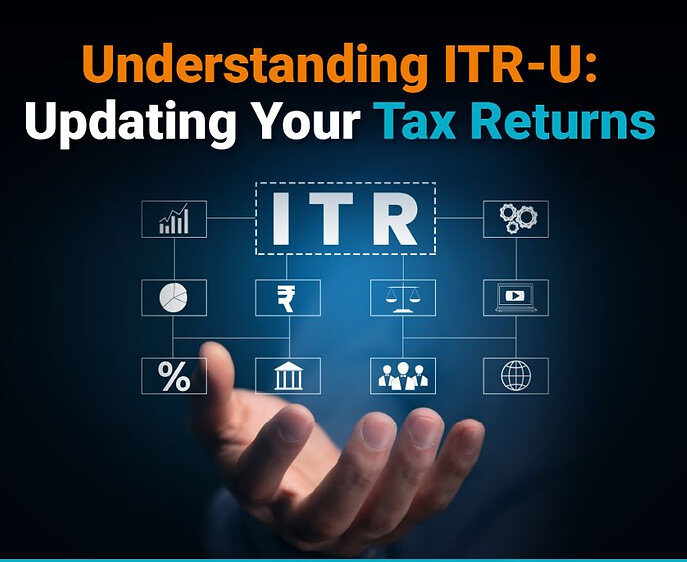ITR-U in India, introduced under Section 139(8A) of the Income Tax Act, 1961, allows taxpayers to update their income tax returns to correct errors or omissions. With India’s tax base at 1.47 crore taxpayers in FY 2024-25, ITR-U is a game-changer for compliance. What is it, and how does it work? Let’s break it down.
What Is ITR-U?
The concept of ITR-U was introduced in Budget 2022 and came into effect from April 1, 2022. It allows taxpayers to file an updated return if they missed reporting income or made errors in their previous filings. This can be done within 24 months from the end of the assessment year. For example, if you missed declaring certain income in FY 2021-22, you can still file an updated return for that year until March 31, 2025.
This move promotes tax transparency and also gives taxpayers a chance to come clean without the fear of scrutiny or raids. However, certain conditions apply. You cannot use this return if it results in a refund or lowers your existing tax liability.
Benefits: Flexibility and Compliance
ITR-U in India promotes a culture of voluntary tax compliance. It’s particularly useful for freelancers, gig workers, or small business owners who may unintentionally underreport income. Moreover, it reduces the risk of getting a notice from the Income Tax Department. Filing proactively shows intent to comply. This matters when seeking bank loans or investment approvals.
In addition, you can avoid costly penalties that can exceed 50% of your tax dues. That’s why filing through ITR-U is far better than ignoring past mistakes.
Who Can File ITR-U and When?
ITR-U in India can be filed by any taxpayer who missed the original or belated ITR deadline. It also helps those who filed but now wish to disclose additional income. However, it can’t be used if:
- You’re decreasing declared income
- You’re claiming higher refunds
- You’re reporting losses for carry forward
- You’re involved in a tax evasion case
Eligible taxpayers can file ITR-U for up to two previous years. For example, until 31st March 2025, you can update returns for AY 2022–23 and AY 2023–24. This flexibility ensures that small errors or oversights don’t turn into legal nightmares.
Moreover, the updated return must be accompanied by a penalty. If filed within 12 months, an additional 25% of tax and interest is charged. After 12 months, it increases to 50%.
Who Needs It:
ITR-U in India benefits salaried individuals, freelancers, and businesses correcting errors like unreported interest, dividends, or missed deductions. In 2024, 30% of ITR-U filers were professionals, per IBEF. Use the e-filing portal, verify with AIS, and consult a tax advisor for complex cases. Learn more at the Income Tax website.
Conclusion:
In conclusion, ITR-U in India offers a vital opportunity to ensure tax compliance, minimize penalties, and correct past filings, but requires timely action. Moreover, with growing digital literacy, it helps more users stay tax‑compliant. Ready to update your ITR? Explore more tax insights now!
– Ketaki Dandekar (Team Arthology)
Read more about ITR-U here – https://cleartax.in/updated-income-tax-return
